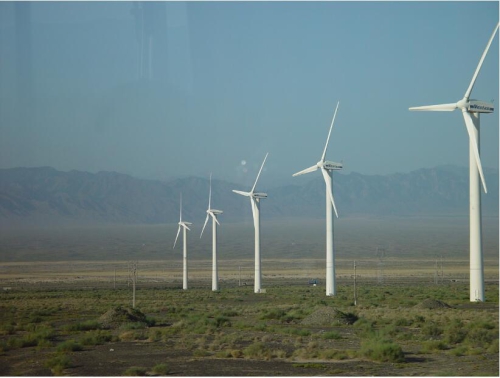A New Study Reveals a Widespread Decrease in Wind Energy Resources over the Northern Hemisphere
Date:2018-12-04
As climate change is becoming more and more a matter of concern, efforts on mitigation are being undertaken by the world community. Developing clean and renewable energy is a major component of those efforts for its significant contribution to reducing carbon emission to the atmosphere compared with fossil fuel. In 2016, renewable energy contributes more than 19% to the global final energy consumption. Of all the renewable energy sources, the wind is one of the key players in terms of installed electricity generating capacity, only exceeded by hydropower.
Wind energy is a natural resource characterized by instability. Previous studies mainly focus on the assessment of wind energy reserves, but it’s not clear how the wind energy evolves over time.

The Dabancheng wind farm in China's Xinjiang province. (Photo taken by HUANG Gang)
A new study focusing on the change in wind energy resources and models’ simulation ability over the Northern Hemisphere by the collaboration of IAP researchers—Ph.D. candidate TIAN Qun, Professor HUANG Gang, Associate Professor HU Kaiming, and Purdue University researcher—Professor Dev Niyogi was recently published. It reveals a widespread decline in wind energy resources over the Northern Hemisphere. Using station observation data, the study finds that approximately 30%, 50% and 80% of the stations lost over 30% of the wind power potential since 1979 in North America, Europe, and Asia, respectively. The study also reveals that global climate models (GCM) cannot replicate the long-term changes on wind energy, indicating wind energy projections based on GCM simulations should be used with careful consideration to the model performance.
"Our study is one of the first comprehensive assessments of the GCM-based winds against surface observations over multiple continents. We found that the decline of wind energy is a widespread and potential global phenomenon. In addition, the finding that the climate models have a notable deficiency in simulating wind energy is an important conclusion that needs further attention." said TIAN, the lead author of the paper.
Citation: Tian Q, Huang G, Hu K, Niyogi D, Observed and global climate model based changes in wind power potential over the Northern Hemisphere during 1979–2016, Energy (2019), doi: https://doi.org/10.1016/j.energy.2018.11.027 .
Media Contact: Ms. LIN Zheng, jennylin@mail.iap.ac.cn
